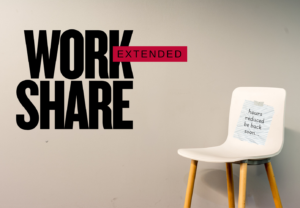
Top 50 HR Management Stats for 2024: Essential Insights on Hiring, Recruiting, Onboarding, Retention, Diversity & Performance
Today’s top HR Managers navigate the complex hiring, recruiting, onboarding, retention, diversity, inclusion, and performance management spectrum with detailed and complete understanding of key metrics and statistics. Whether you’re a seasoned HR professional or an employer looking to optimize your human resource strategies, these insights are indispensable in a competitive HR environment, further complicated by regional factors such as high cost of living in many urban centers.

Quick Stats
- 60% of candidates have quit an application process because it was too lengthy
- Only 12% of employees strongly agree their organization does a great job of onboarding new employees (Gallup)
- 56% of HR managers say analytics will play a key role in hiring decisions
- Remote work has increased by 44% over the last five years
- Companies that support remote work have 25% lower employee turnover
- 80% of employees feel more engaged when their work is consistent with the core values and mission of their organization
- 90% of executives say keeping new hires is an issue in their organizations
- Only 29% of employees are happy with career advancement opportunities at their current company
- 65% of employees say they want more feedback
- Organizations with a strong learning culture have 30-50% higher engagement and retention rates
Key Hiring Trends Employers Can’t Ignore
Diversifying the talent pool remains a critical priority. In fact, 78% of respondents to Deloitte’s Global Human Capital Trends survey found that diversity and inclusion give their companies a distinct competitive edge. As businesses strive for innovation and creativity, fostering a diverse workforce is not just a buzzword but a business imperative.
Reskilling and upskilling have become central themes as executives predict that 40% of the workforce will need to reskill over the next three years. This is partly driven by the evolution of job roles and the introduction of new technologies. Companies investing in comprehensive training programs are likely to retain top talent and adapt more swiftly to industry changes.
Interestingly, nonlinear career paths are becoming the norm. Currently, 56% of candidates report applying for jobs outside their current area of expertise (Source: SHRM). This trend highlights the importance of flexible job descriptions and open-minded recruitment strategies that value transferable skills.
Finally, the competition for top talent continues to heighten. About 1.43% of HR professionals cite competition from other employers as the primary challenge in hiring the right employees (Source: SHRM). This underscores the need for innovative recruitment approaches and compelling employer branding to attract high-caliber candidates.

Remote Work Statistics: The New Normal?
Remote work has undeniably shifted from a temporary solution to a permanent fixture in the business world. With over 50% of employers indicating increased productivity as the primary advantage, it’s clear that remote work is here to stay. The convenience and flexibility offered by working from home have resonated well with both employers and employees.
21% of employees in remote-ready jobs are still opting to work fully on-site, signaling a diverse preference landscape. Meanwhile, a whopping 97% of employees have expressed that they don’t want to return to the office full-time and would rather have some degree of flexibility between working remotely and in-office. This preference is not just about avoiding commutes but also about balancing work and personal life more effectively.
68% of hiring managers report that remote work is operating better than it did initially in 2020. Key reasons include a reduction in non-essential meetings (70%) and increased schedule flexibility (60%). These adjustments have led to improved efficiency, engagement, and professional growth.
73% of remote workers who said that flexible working arrangements improved their personal wellness and enabled them to integrate work with outside activities. Additionally, 40% of workers noted an increase in engagement and productivity due to remote work environments.
From the employers’ perspective, 18% view increased time zone coverage as the most significant benefit of remote work. This allows businesses to operate more fluidly across global markets, making collaboration and customer service more dynamic and responsive.
These statistics paint a clear picture: remote work isn’t just a passing trend but a transformative aspect of the modern workplace. Embracing this shift not only caters to employee preferences but also enhances overall productivity and global operational capabilities.
Onboarding Processes are Critical
The onboarding process sets the tone for an employee’s journey with the company. Statistics indicate that 69% of employees are more likely to stay with a company for three years if they have a great onboarding experience. This underscores the importance of investing in comprehensive onboarding programs.
- 76% of organizations believe onboarding practices need to be more scalable across departments.
- 58% of companies say their onboarding program is focused on processes and paperwork only.
Understanding these numbers can help you refine your strategies to attract, retain, and nurture top talent. Keep these stats in mind as you navigate the complexities of HR management in 2024.
Top 50 HR Stats for 2024
- 91% of HR professionals are excited about the future of HR.
- 58% of HR leaders believe HR will take a leading role in diversity, equity, and inclusion.
- 60% of HR leaders believe HR will take a leading role in talent management and workforce planning.
- 50% of HR workers currently use some form of AI at work.
- 56% of HR leaders believe HR will take a leading role in skilling/upskilling of the workforce.
- 32% of U.S. employees were engaged in 2022.
- HR Analytics skills increased from 32% in 2019.
- Advancements in HR software for 2024 focus heavily on AI integration.
- 73% of employers find it challenging to source candidates with the right skills.
- Employee turnover can be reduced by 87% with effective onboarding programs.
- Companies that support remote work see a 25% reduction in employee turnover.
- 80% of employees feel more loyal to a company that promotes diversity and inclusion.
- High employee engagement can lead to a 41% reduction in absenteeism.
- Automation in HR could save up to 14 hours per week.
- The average time to fill a position is 42 days.
- Mobile-friendly job applications increase candidate applications by 11%.
- 69% of employees look for company diversity when considering job offers.
- Employee referrals tend to have a 45% retention rate after two years.
- 82% of HR leaders plan to increase their investment in workplace learning and development.
- 46% of job seekers cite company culture as a key factor in their decision-making process.
- The inclusion of AI in recruiting processes can improve efficiency by 30%.
- Organizations with strong learning cultures have 30-50% higher employee engagement rates.
- 94% of employees would stay at a company longer if it invested in their career development.
- On average, it costs $4,129 to hire a new employee.
- 62% of companies believe more metrics should be used to measure recruiting performance.
- Over 70% of organizations focus on employee health and well-being initiatives.
- Companies that engage in workforce planning see a 40% increase in operational efficiency.
- Early-stage companies are 1.9 times more likely to adopt HR software early on.
- Remote job opportunities increased by 40% year over year.
- Employee satisfaction increases by 24% when using effective HR software tools.
- Leadership development is a top priority for 65% of HR professionals.
- 80% of HR managers believe analytics improve company decision-making.
- Artificial intelligence-based recruiting tools improve speed-to-hire by 10%.
- Millennials and Gen Z make up 50% of the U.S. workforce.
- 35% of companies use advanced analytics to track employee performance.
- 67% of job seekers use mobile devices to search for job openings.
- HR tech market is expected to grow at a CAGR of 9.6% from 2021 to 2026.
- 46% of companies report streamlining onboarding processes with new technologies.
- Learning and development programs can improve retention rates by 34%.
- 82% of organizations use tech to support workforce planning activities.
- 71% of executives believe their HR analytics capabilities need improvement.
- Organizations with inclusive cultures are 2 times more likely to meet financial targets.
- Personalized employee experiences can increase productivity by up to 15%.
- 75% of HR leaders report an increased focus on employee well-being post-2020.
- Use of predictive analytics in HR will grow by 40% by 2024.
- 48% of HR teams will invest more in diversity training programs.
- Flexible work arrangements are rated highly by 67% of employees as a top benefit.
- Approximately 70% of HR processes will be automated by 2025.
- 59% of HR leaders say reskilling their workforce is critical for future success.
- Telecommuting yields a 21% increase in worker productivity.
Sources
[1] https://www.visual-planning.com/en/blog/hr-statistics-and-trends
[2] b2breviews.com/hr-statistics-trends/


 Our HR solutions experts can recommend the right mix of HR outsourced services to make your entry into Canada easier.
Our HR solutions experts can recommend the right mix of HR outsourced services to make your entry into Canada easier.  Pivotal Employment Management Services co-hires your workforce, simplifying entry of your business in Canada.
Pivotal Employment Management Services co-hires your workforce, simplifying entry of your business in Canada. 
















Don't Allow Standard Expectations to be What Sets Employers Apart